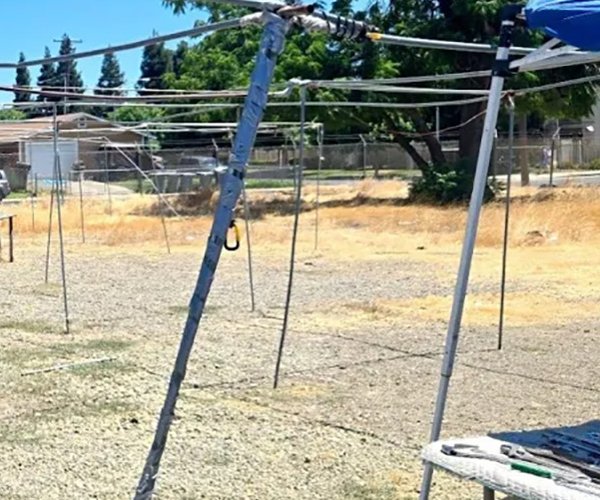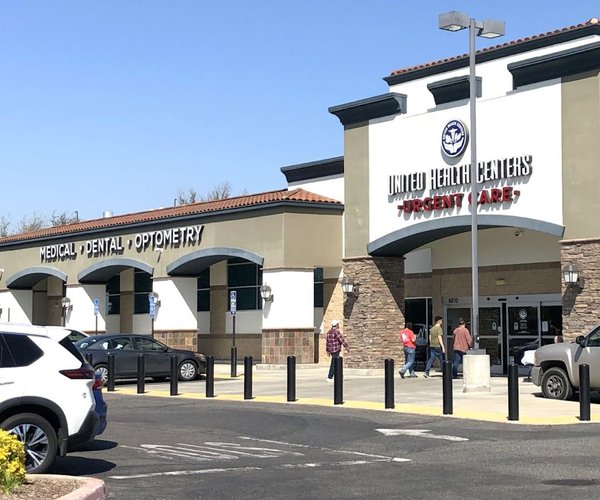When the City of Turlock decided to hold a public workshop on the proposed increases to water rates, city staff were preparing for Turlock residents attending the meeting to be in opposition or protest. But as Wednesday’s workshop came to an end, many of the residents were calling for the City to include harsher penalties for ratepayers, as they believe it would create an incentive to conserve water.
As the City prepares to switch to a rate structure that would see Turlock residents pay for the amount of water used, Municipal Services Director Michael Cooke says that the new structure would result in customers using less water.
“With the current structure, people are paying the same base amount regardless if they use 8,000 gallons or 20,000 so it creates this idea that it doesn’t matter if they use more than they should,” said Cooke. “But with this new structure, people won’t use as much because if you use more, you pay more.”
The current structure, which provides customers with a minimum allotment of approximately 20,600 gallons for a minimum charge of $24.05, can encourage overuse at times while not allowing customers to fully benefit from water conservation measures, says city staff.
The proposed changes would see six rate increases take place over the next five years, with the first increase taking effect July 1. The second increase is scheduled for Jan. 1, 2015, with the remaining increases occurring annually thereafter until 2019.
The initial proposed rate structure in July, compiled of three primary charges, would charge a single/multi-family residency a commodity charge of 48 cents per 1,000 gallons, a capacity charge of $17.50 a month, and a customer charge of $2.20 per month.
All three charges would increase slightly on an annual basis over the next five years, with the final charges resulting in a 94 cents per 100 gallons commodity charge, a $29.40 per month capacity charge, and a $3.60 per month customer charge.
City staff, who have analyzed average monthly water use patterns by single/multi-family residences, estimate the average residential bill to be approximately $26.90 per month under the first proposed increase. Using the same water usage patterns, the average residential bill is estimated to be approximately $47.10 per month by the final increase in 2019.
According to Cooke, the capacity charge, which varies by meter size, recovers approximately 60 percent of revenues, while the commodity charges, which include three different groups of customer classes, recover approximately 34 percent. The remaining 6 percent of revenues is recovered by the customer charge.
“The commodity charge covers the cost of water supply, while the capacity charge includes the meter fee, and costs associated with the maximum size of facilities required to meet peak production,” explained Cooke. “The customer charge covers the cost of mailing and processing bills, and other administrative costs.”
While the City has made reductions in operations and capital expenses, a structural deficit remains in the City’s water fund. Additionally, the City faces a number of significant capital needs to provide an adequate water supply that meets state and federal water quality standards.
In 2008, bonds were sold to fund significant capital improvements to the water system, including new wells, water storage tanks and water meters. Due to declining revenue, in 2011-12, the City relied on $560,000 from the rate stabilization reserve to meet its minimum debt coverage requirements. According to city staff, such deficit spending is not sustainable in the long term and may adversely impact the credit rating of the City’s Water Enterprise Fund.
After contracting with Municipal Financial Services in 2013 to conduct a water rate and water capacity charges study, the City found that approximately $31.7 million would be needed over the next five years for capital expenditures, including groundwater supply projects, water storage and distribution system improvements.
Aside from covering structural deficits, operations and capital expenses, the proposed new rate structure is said to conserve water — an important proponent as California’s three-year drought worsens. Even though the new structure will see customers paying for the actual amount of water used, some residents feel the structure isn’t strict enough to encourage decreased water usage.
“There’s no incentive to save water,” said lifelong resident and business owner Milt Trieweiler. “You need to set a limit of the amount of water they can use, and then charge a higher fee if they use more than that amount. It would be a penalty for going over. Right now you’re going to charge 48 cents per 1,000 gallons, but there’s no limit on how many gallons they can use. You should make the fee change to $1 per 1,000 gallons after they’ve gone over a certain limit, so they have a base line quantity…Turlock water is beautiful. Why are we not trying to conserve it?”
Tom Pavletic, owner of Municipal Financial Services, said that although a strict tiered system would create an incentive to conserve, there is a correlation between the percent increase in a customer’s bill and the decrease in their usage, which will result from the new rate structure.
“There are many right ways to do this,” said Pavletic. “But imagine introducing a three tiered system when there are people who are already struggling to understand the changes that we’re proposing…perhaps tiers will change in the future.”
Regulatory Affairs Manager Garner Reynolds warned of such penalties that Trieweiler and other residents were suggesting, noting other agencies that have done so and ended up in court because of it.
“There certainly are agencies that do that, but many times it ends up in court cases because you have to show that those increase in fees is actually a cost that you have incurred,” said Reynolds. “Some agencies, such as PG&E, might be able to do so because they are operating under different laws.”
Cooke explained to the concerned residents that the City of Turlock has several water conservation programs and services, and that should the Council decide they want to step up the City’s conservation efforts, they could do so at any point.
“This is a five year plan, but if after two years we see that it’s not working, we could always make changes,” said Cooke. “That’s why we decided to do an annual review…What I find remarkable is that you’re ready to drastically conserve water no matter what the rates are.”
Toni Cordell of the Regulator Affairs Division echoed Cooke’s response, saying that she was surprised to hear the residents so focused on water conservation.
“Of all the concerns I had about this meeting, I’m glad that it was that our customers want us to do more to conserve water,” said Cordell.
Cooke shared that since the City installed residential water meters, Turlock has seen a 17 percent decrease in water usage. Since installing the water meters, Turlock residents have been able to view their monthly water usage patterns online, leading customers to boost their own water conservation efforts.
“Even just installing the meters has caused a decrease,” said Cooke. “And we have projected a significant decrease that will result from the new rate structure…it will stimulate conservation.”
The City issued a notice of a public hearing on the water rate increases to all Turlock residents, which included a protest form allowing owners or tenants of a property to object to the proposed increased service charges by submitting a written protest by mail or in person to City Hall. The written protests, which must also include the original signature of the customer submitting the protest and their address, must be received by the City before the conclusion of the public hearing on March 25.
Should there be a majority protest, or more than half of the 18,500 water accounts in Turlock, the Council could not move forward with the new structure and rate increases.
The public hearing will be held at 6 p.m. on March 25 at City Hall, located at 156 S. Broadway.






